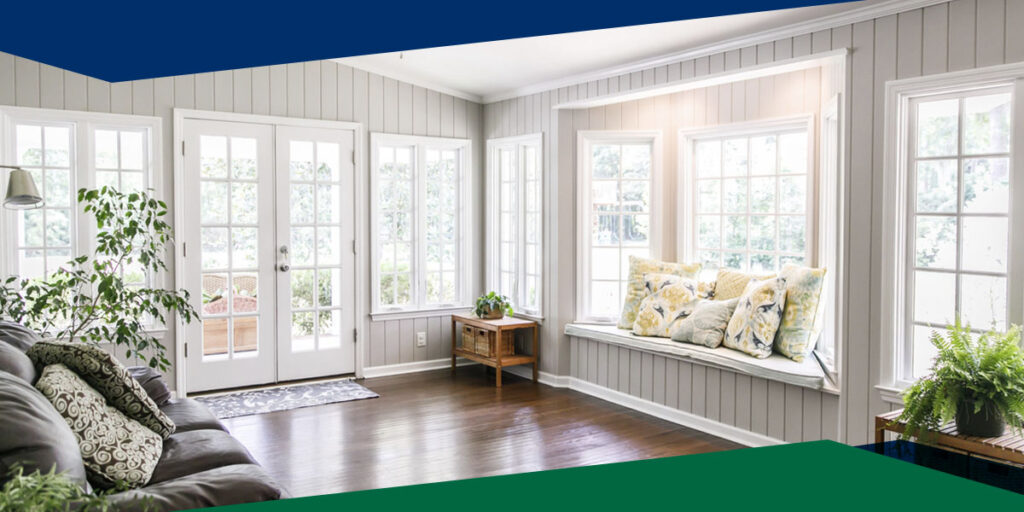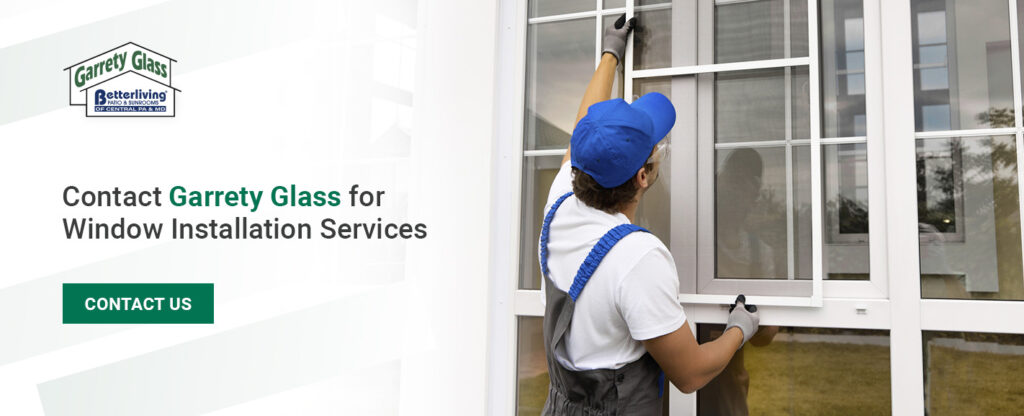
Size is only one of multiple factors to consider when choosing the right type of windows for your home. Each room has unique needs, such as privacy, light and ventilation. The right windows can impact aesthetics, energy efficiency and comfort levels for every room.
If you notice drafts and higher energy bills despite closed windows or signs of warping, rot, condensation or moisture between panes, it may be time to replace your windows. This window replacement buying guide serves as a helpful starting point.
Overview of Window Types
Different windows offer unique features and benefits, allowing you to choose one based on your needs and preferences. Here’s a quick overview of some popular window types:
- Single-hung windows have two parts called sashes. The bottom part can move up and down while the top part stays in place.
- Double-hung windows give you more options for ventilation. They are like single-hung windows, but both the top and bottom sashes can move up and down.
- Awning windows are great for letting in air while keeping rain out. Like an awning that provides shade, these windows have hinged at the top and open outward.
- Casement windows have hinges on the side to open outward, typically by turning a crank.
- Bay windows project outward from the home, typically consisting of three panes — a large center window flanked by two smaller ones.
- Bow windows have a similar style to bay windows, except bow windows have four or more panes that curve outward.
- Garden windows extend outward and have a three-dimensional design featuring a shelf for plants or decorative items.
- Energy-efficient windows are designed with advanced materials to reduce noise and improve insulation, keeping homes warmer in winter and cooler in summer.
What Windows Look Best in Each Room
Our window buying guide for each room considers style, functionality and aesthetics.
1. Window Guide for the Bedroom
Your bedroom windows should reflect your unique style while providing the functionality needed for a comfortable and inviting retreat. Think about custom-shaped windows or adding one of the following choices:
- Double-hung or casement windows: Both are popular for bedrooms, providing excellent ventilation while maintaining privacy. Double-hung windows are easy to clean, and the two adjustable sashes provide good ventilation, while casement windows offer maximum airflow with unobstructed views.

- Energy-efficient windows: These windows will enhance comfort by regulating temperature and contributing to sound insulation and dust control. Combining them with stylish window treatments, such as room-darkening shades, can create a peaceful environment for restful sleep.
- Bay or bow windows: Depending on your bedroom layout, these windows can create cozy nooks for reading and relaxation.
When selecting windows, consider local building codes that may require specific egress options for safety.
2. Window Guide for the Living Room
A living room must be a bright spot for family gatherings and relaxation. When planning window placements, consider the arrangement of furniture and entertainment electronics to avoid sun damage or glare, especially on TV screens.
These windows are excellent choices for living rooms:
- Picture windows: These fixed windows are ideal for large, unobstructed views and natural light. While they create a bright and inviting atmosphere, they cannot open, making them unsuitable for living rooms that require ventilation.
- Bay or bow windows: Bay and bow windows add architectural interest by protruding from the exterior wall, creating a cozy nook for extra seating or storage. They also offer dimension to the room and panoramic views that can enhance curb appeal.
- Awning or casement windows: Mixing ventilating casement or awning windows with other window types allows for both stunning views and fresh air to maximize comfort.
- Energy-efficient windows: Opt for energy-efficient windows to help reduce electricity costs and enhance security.
You can create a living area that suits your vision with various window styles and treatments.
3. Window Guide for the Bathroom
When selecting bathroom windows, prioritize designs that incorporate plenty of glass for an open, inviting feel while also considering privacy options, such as frosted glass windows or window treatments. Obscure glass options give privacy without adding window treatments, letting in more natural light. Bathroom windows with large glass areas are popular for setting a pristine aesthetic tone.
For an optimal bathroom design, use vinyl or fiberglass windows for their durability and moisture resistance.
- Awning windows: Awning windows open outward and upward and are great for ventilation while maintaining privacy, especially when installed higher on the wall.
- Hopper windows: These windows hinge at the bottom and open inward to offer effective ventilation without taking up much room.
Ensure each bathroom has at least one ventilating window to reduce humidity and the risk of mold growth.
4. Window Guide for the Kitchen
Enhance the focal point around the sink with large windows or a combination of smaller ones. This approach increases natural light and enhances the visual appeal of a space where families spend significant time. Energy-efficient glass options to help keep the kitchen cool in summer and warm in winter.
The following are the best window types for kitchens:
- Sliding windows: Sliding windows are practical for kitchens because they are easy to open and close. They provide ample natural light and good ventilation and should ideally be placed above sinks or counters.
- Casement windows: Since they open outward, they are beneficial for ventilating cooking odors and steam. They are easy to operate, even in hard-to-reach areas.
- Garden windows: These add a unique touch to kitchens by providing a shelf for herbs or plants, bringing a bit of nature indoors. They allow plenty of natural light and can enhance the kitchen’s overall aesthetic.
Have at least one opening window on each side of the kitchen to promote cross-ventilation, especially if you cook frequently.
5. Window Guide for the Home Office
Creating an inspiring and productive home office begins with selecting the right windows that contribute to a stylish and motivating workspace. The best window types for a home office include:
- Double-hung windows: Double-hung windows offer flexibility in ventilation and are easy to style to match your office decor while providing an inviting atmosphere. Since they are excellent for controlling airflow, they can help you maintain your focus and productivity in an ideal working environment.
- Casement windows: Another great option, casement windows are accessible and easy to operate in hard-to-reach places, such as behind a desk. This window type contributes to natural light, transforming your office into a bright and energizing environment.
- Skylights: Installed on the roof, skylights maximize wall space in smaller spaces and flood the room with sunlight to reduce the need for artificial lighting during the day. Just ensure the skylight is properly insulated to prevent heat gain in summer and heat loss in winter.
Contact Garrety Home Pros for Window Installation Services

Every window type has specific advantages that will enhance your living space uniquely. Different window types have varying installation processes, requirements and considerations, including potential modifications to existing frames or structures.
For personalized guidance, consult us at Garrety Home Pros. We’ll help you select the ideal options for every room in your home that meet your needs and budget. Plus, our windows have a lifetime transferrable warranty. Because when you decide to invest in window replacements, you’re also investing in the beauty and value of your property.
Request a quote for window installation or replacement services in any room, or take advantage of these limited-time deals.